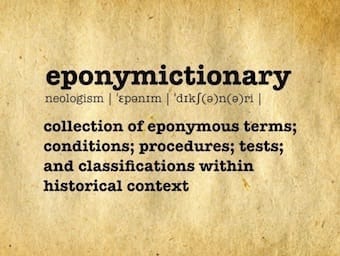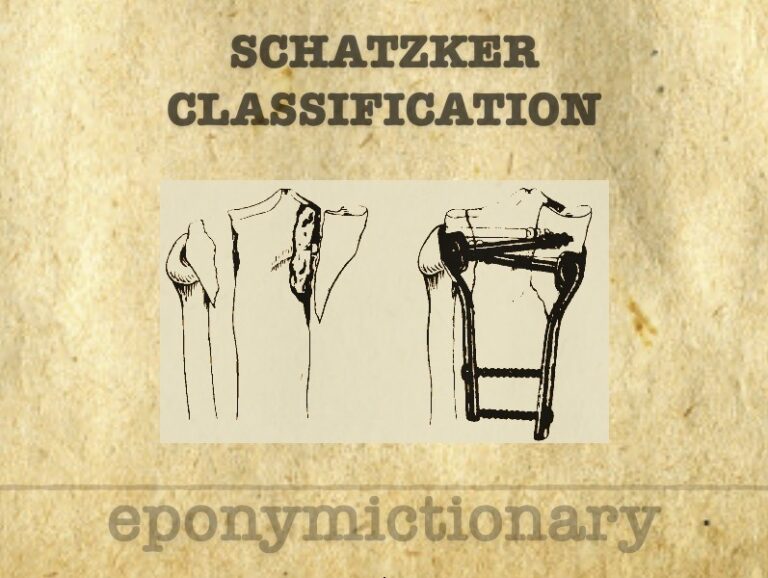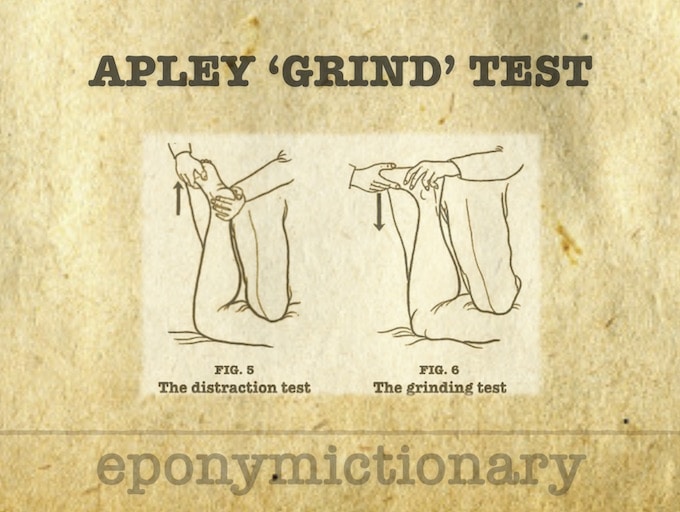
Arnold–Chiari malformation
Arnold-Chiari malformation (Type II Chiari malformation) associated with myelomeningocele. Julius Arnold (1835-1915) and Hans Chiari (1851-1916)

Arnold-Chiari malformation (Type II Chiari malformation) associated with myelomeningocele. Julius Arnold (1835-1915) and Hans Chiari (1851-1916)

Budd–Chiari syndrome. Hepatic venous outflow obstruction. George Budd (1808 - 1882) and Hans Chiari (1851-1916)

Kienböck Disease: Avascular necrosis (osteonecrosis) of the lunate leading to abnormal carpal motion. Descriebd 1910 by Robert Kienböck (1871-1953)

Lauge-Hansen classification of ankle injuries (1950) - predictable fracture patterns defined by injury mechanism and resultant radiological findings

Terry-Thomas Sign: increased distance between the scaphoid and the lunate (scapholunate space) Described by Frankel in 1977

Bankart Lesion: Antero-inferior detachment of the glenoid labrum associated with first-time traumatic anterior shoulder dislocations.

Archaic eponym: Effectively a fracture-dislocation of the ankle, involving a fracture of the fibula, disruption of the deltoid ligaments with an intact tibiofibular ligament

Bosworth fracture-dislocation of the ankle. Rare injury with proximal fibular fragment trapped behind the tibia, frequently irreducible by closed methods.

The Schatzker classification system divides tibial plateau fractures into six types. First described 1979 by Canadian surgeon Joseph Schatzker

Salter-Harris classification of fractures describes injuries involving the epiphyseal plate of any bone. Described by Salter and Harris (Canada, 1963)

Apley Grind test (Apley Compression test) is a maneuver that is performed to evaluate for meniscus injury. 1947 by Alan Graham Apley (1914 - 1996)
Whipple procedure: Radical pancreatoduodenectomy for cancer of pancreas. Originally Codivilla (1898), then Kausch (1907) and Whipple (1934)